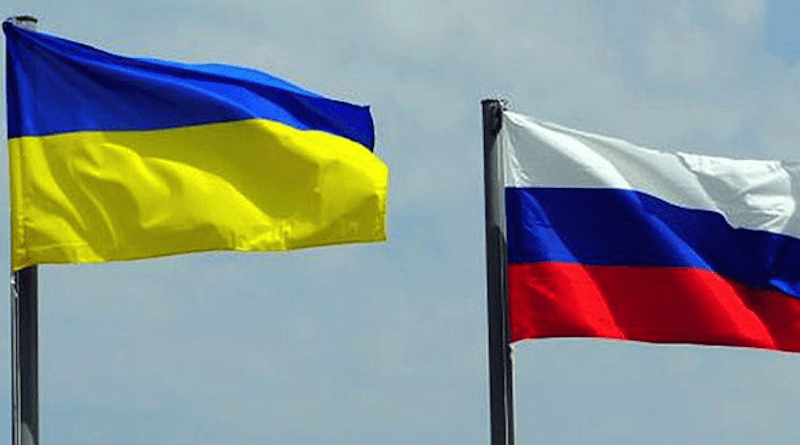Russian Web Site Highlights Resistance In Baltics, Ukraine And Western Belarus
By Paul Goble
A new Russian website intended to ensure no one forgets what it calls “the victims of nationalist terror in the Western regions of the USSR” unintentionally calls attention to the strength of resistance to the imposition of Soviet power in the Baltic states, Western Ukraine and Western Belarus after World War II.
The site, lists.historyfoundation.ru/, includes data, admitted to be as yet far from complete, on 3294 civilians (2298) and military (996) who were killed (2444), wounded (505), kidnapped (293) or disappeared (52) between 1944 and 1947. The number of victims was 190 in 1944, 2641 in 1945, 204 in 1946, and 258 in 1947 (www.rus-obr.ru/blog/6429).
Victims of all categories, the site goes on, totaled 1945 in Western Ukraine, 423 in Western Belarus, 251 in Estonia, 168 in Latvia, and 507 in Lithuania. And the site can be searched by both name and location, something that will allow interested individuals to find out about their relatives or friends.
And the site also includes hypertext links to the full text of “Everyday Terror: The Activity of Nationalist Formations in the Western Regions of the USSR, Book I” (in Russian; Moscow, 2009, 232 pp., ISBN: 987-5-9990-0004-0), and to other collections of archival documents as well, from which some of the site’s data entries are taken.
In presenting the site, its compilers note that “during the course of long years, the history of the activity of armed nationalist formations on the territory of the Western regions of the Soviet Union remained a prohibited theme for investigators” because it did not fit “into the Procrustean bed of official ideology.”
“After the collapse of the Soviet Union, the history of the harsh ‘war after the war’ in the Western regions of the USSR appeared at the center of attention of the political elite of the independent states,” where those who participated in the fight against Soviet power were presented as national heroes.
Thus it should come as no surprise that “in the last decade and a half, the activity of the nationalist armed formations became in the Baltic republics and in Ukraine one of the most actively investigated pages of Soviet history,” the site’s editors say. But these investigations, the editors add, were far from objective.
“The opposite site of making heroes of ‘the forest brothers’ and the militants of the OUN and UPA was the neglect of their numerous victims, a large part of which were not Red commissars but peaceful residents who were local to Soviet power.” According to the editors, 85 percent of the more than 25,000 killed by the Forest Brothers in Lithuania were Lithuanian.
These victims and the thousands more in Western Ukraine and Western Belarus are being intentionally forgotten, dismissed as “Soviet agents” or classified as victims of the Soviet NKVD. That must end, the Historical Memory Foundation says, and to that end, it has launched this website.
“We are certain,” the editors say, “that the memory of the innocent victims of nationalist terror must be carefully preserved and kept alive just as the memory about the innocent victims of Soviet political repressions are.” And consequently, they have launched the site in the hopes that those with information about the victims will contribute to it.
“Recognizing that the problem of preserving the memory about the victims of nationalist terror is important for Belarus, Latvia, Lithuania, Poland, Russia and Estonia, the Historical Memory Foundation has begun the realization of the project of the creation of a generally accessible electronic data base” of the victims of “nationalist terror.”
The primary source for the site, its organizers is, are the NKVD and MVD data bases housed in the State Archive of the Russian Federation, which include materials draw from the daily reports to NKVD Deputy Commissar S.N. Kruglov of these agencies during the course of their struggle with “banditism.”
And the site’s introduction concludes with the note that in order to present “the fullest data on the victims of nationalist terror,” the site’s editors “have considered it correct not to include in the lists the soldiers of the Red Army and organs of internal affairs and state security who died in the course of the operations for the liquidation of nationalist armed formations.”
Many Russians who visit this site may learn for the first time just how strong was the resistance to Stalin’s imposition or re-imposition of Soviet power in the Western borderlands of the USSR and the occupied Baltic countries, something that will do little to promote positive attitudes among them to the peoples of these now independent countries.
At the same time, many of the peoples in these countries will be able to use this site to learn more about the national resistance in their past than many of them have up to now, a knowledge that will also affect how they view the Soviet system and those who continue to apologize for some of its worst periods and personalities.

